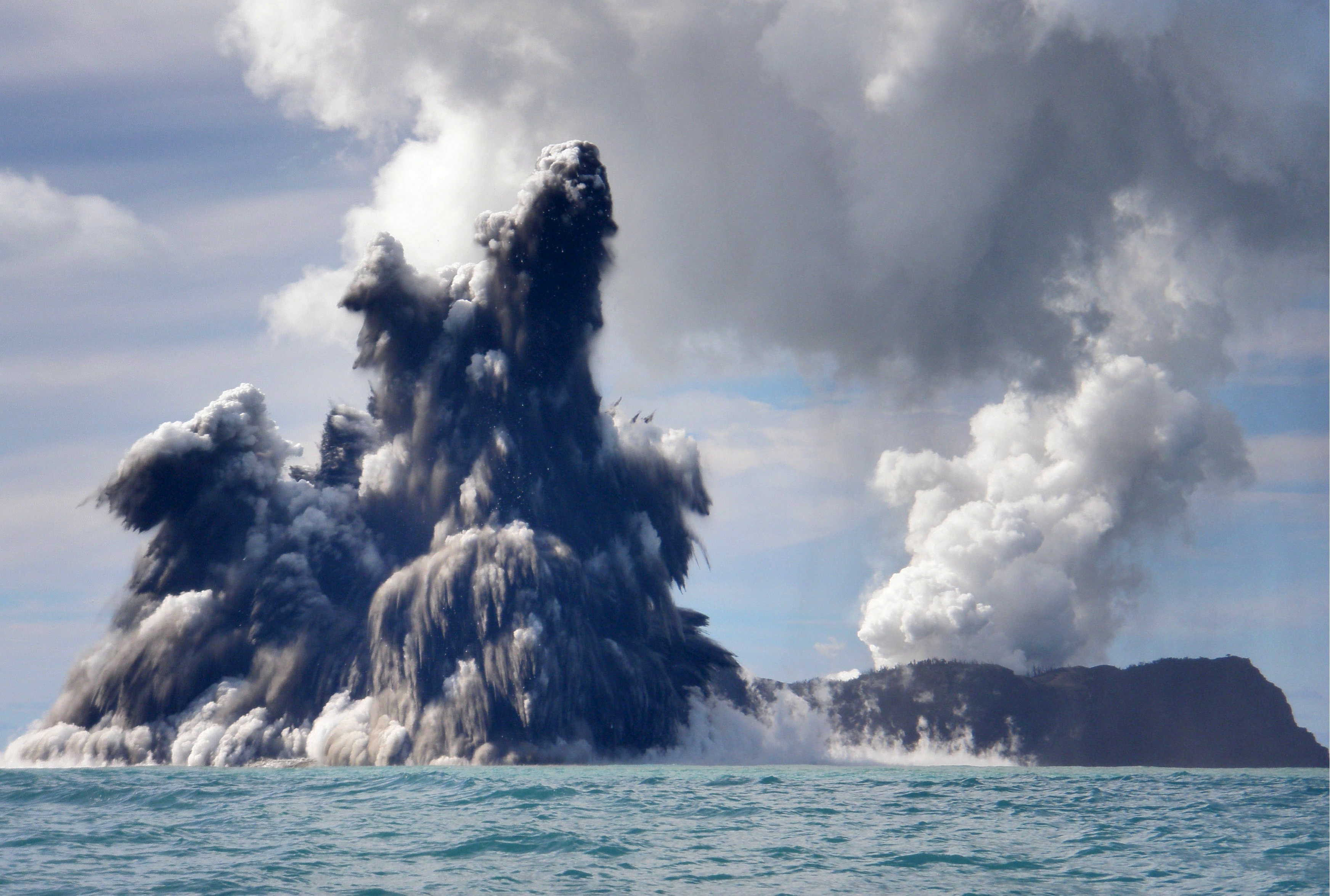
Suva, Fiji – International help is on its way to the south Pacific kingdom of Tonga, where a massive underwater volcano erupted on Saturday triggering a tsunami and leaving the island nation blanketed in ash.
The eruption at the Hunga Tonga-Hunga Ha’apai volcano was recorded as a 7.8-magnitude earthquake by the US Tsunami Warning System – the biggest since Pinatubo in the Philippines in 1991 – and triggered a tsunami for countries around the Pacific including Tonga and Peru, where two people are known to have drowned
Estimated by scientists to have exerted a force equivalent to 1,000 Hiroshima nuclear bombs, the eruption was heard more than 750km (466 miles) away in Fiji.
The New Zealand High Commission in Tonga confirmed on Monday that significant damage had been caused to the western coast of the nation, an area known for being home to several resorts, as well as the waterfront of the capital, Nuku’alofa.
One British woman who was swept away as she tried to rescue her dogs was confirmed dead, British media said citing her brother. There have been no official reports of injuries or deaths in Tonga yet, with communications largely severed.
A thick layer of ash has blanketed Nuku’alofa, with authorities on the ground working to establish communication with smaller islands “as a matter of priority”.
It was the second eruption of the volcano in less than a month, with Tonga officials revealing that the event was seven times stronger than the last eruption.
Adding to the anxiety of loved ones living overseas, Tonga’s communications international telephone lines and internet remain cut off and experts say it could be some time before the connections are restored.
“The country’s only undersea internet cable connection to Fiji is inoperable,” Amanda Watson, a research fellow at the Australian National University Department of Pacific Affairs, told Al Jazeera.
“In 2019, Tonga had no internet service when the same undersea cable was damaged. It took about a fortnight to repair it, and the repairs may take a similar length of time on this occasion,” Watson added.
“People in Tonga cannot currently communicate their needs or contact their loved ones overseas, adding another layer of difficulty for so many.”
On Monday evening, TV New Zealand said an assessment of the submarine cable showed two breaks in it; one of which was located close to the volcano.
There is the risk of further delays if there are more eruptions or if the cable is found to be buried in the sea bed.

International help
Australia and New Zealand on Monday sent surveillance flights to assess the damage in Tonga and said they were coordinating with the United States, France and other countries on the humanitarian response.
Australian Minister for Pacific Affairs, Zed Seselja, said via Twitter that shelter, kitchen and hygiene kits were being loaded onto a RAAF aircraft on Monday evening, to be sent to support Tongans affected by the eruption and tsunami.
He added that Australia was committing an initial $1m to deliver humanitarian relief and emergency supplies for the people of Tonga, after the assessment team found the local Tongan airport to be operational.
“Communications remain down and the full extent of the harm to lives and property is currently unknown. What we do know is that Tonga needs immediate assistance to provide its citizens with fresh drinking water and food,” Parliament Speaker Lord Fakafanua said in a statement shared on social media on Monday.
The United Nations said its offices in the region were closely monitoring the situation and were on standby to support as needed.
“The UN family in the Pacific stands ready to support the people of Tonga to recover from the weekend’s volcanic eruption and following tsunami,” acting UN Resident Coordinator Jonathan Veitch told Al Jazeera from Fiji.
“In close collaboration with the government of Tonga and our regional and international partners, we are working with the government to ensure our support is targeted and effective. Our teams are on standby with emergency supplies to assist, and our UN staff based in Tonga are already supporting coordination and response efforts in-country.”
Meanwhile, there has been an outpouring of support from Tongan diaspora communities and others across the world, with many eager to send donations to the disaster-struck nation.
In a statement on Monday, Tonga’s speaker of parliament, Lord Fakafanua, said that more details about Tonga’s official disaster relief fund would be announced shortly; emphasising that all relief funds made “must be verified, transparent and legitimate”.
After Saturday’s eruption, several volcanologists and geologists have cautioned that Tonga may not be over the worst of the crisis.
“Much remains unknown,” Judith Hubbard, a structural geologist with a focus on earthquake hazards at the Nanyang Technological University in Singapore, told Al Jazeera.
“More eruptions are possible from the Hunga Tonga-Hunga Ha’apai volcano, but we don’t know when, how many or how big they will be. It may be possible to say more once we can do post-eruption assessments of the volcanic edifice, but that will be difficult given that the volcano is underwater and the region is unsafe.”
In the meantime, Tongans across the world try to remain hopeful amid the unknown.
In a video released on Monday, Her Royal Highness Princess Latufuipeka of Tonga – daughter of King Tupou VI and Tonga’s High Commissioner to Australia – offered a morale boost to her people:
“Let us focus on gratitude, faith and taking refuge in God,” she said.







